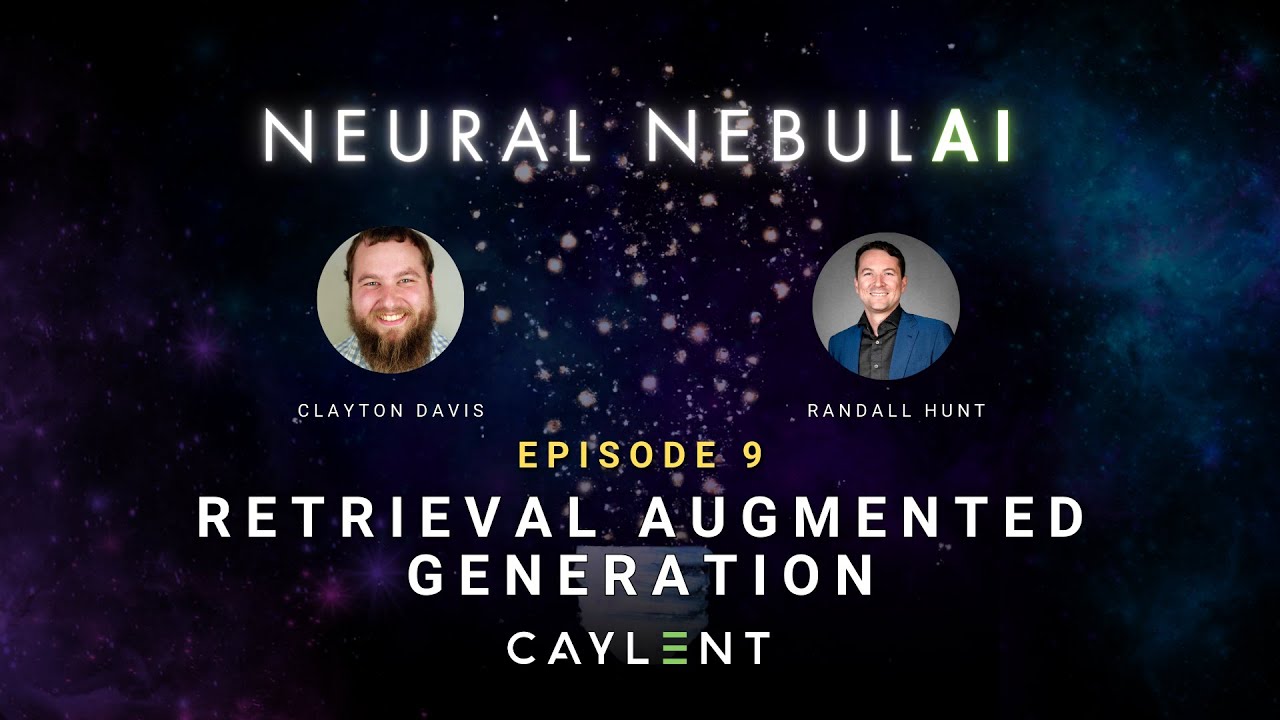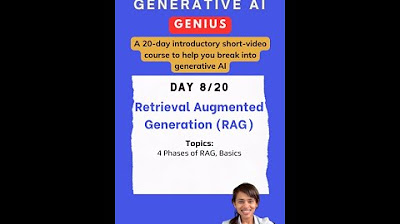Advanced RAG: Auto-Retrieval (with LlamaCloud)
Summary
TLDRIn this session, Jerry discusses Auto Retrieval, an advanced technique for retrieval-augmented generation (RAG) that enhances the precision of information retrieval from vector databases. Unlike naive RAG, which often yields irrelevant context, Auto Retrieval dynamically infers metadata filters based on user queries, ensuring more accurate results. Through a practical use case involving a knowledge base of research papers, Jerry demonstrates how this technique improves the retrieval of both chunks and complete documents. The session provides insights into implementing Auto Retrieval, encouraging users to explore its applications in sophisticated data-driven workflows.
Takeaways
- 😀 Auto Retrieval is an advanced technique that improves upon traditional top-K vector searches by dynamically inferring relevant metadata filters.
- 🤖 Unlike naive RAG, which retrieves the top K most similar chunks, Auto Retrieval ensures more precise and contextually relevant results.
- 📄 The use case involves querying a knowledge base of research papers, where specific papers can be retrieved based on user queries.
- 🔄 The process starts with chunk-level retrieval, followed by generating a rewritten query that includes inferred metadata filters.
- 📈 By filtering for specific metadata (like file names), Auto Retrieval enhances the relevance of the documents returned in response to a query.
- 🔍 The workflow includes calling a chunk-level retriever, creating a query generation prompt, and executing a document-level retriever.
- 🛠️ Tools like Llama Cloud simplify the setup of a persistent RAG pipeline for managing and querying research data effectively.
- 📊 The integration of few-shot examples in the query generation helps ground the model and reduces hallucinations in retrieved context.
- 🏷️ The inferred metadata filters help define a structured output for the query, which includes both query strings and filter conditions.
- 🌟 Overall, Auto Retrieval enhances the query handling process, making it a powerful tool for building sophisticated knowledge assistants.
Q & A
What is the main issue with naive RAG techniques?
-The main issue with naive RAG techniques, which typically rely on top K vector search, is that they often retrieve context that is not very precise, leading to results that may include irrelevant information.
How does Auto Retrieval improve upon traditional retrieval methods?
-Auto Retrieval improves upon traditional methods by using AI to dynamically infer metadata filter parameters based on user queries, allowing for more precise and contextually relevant document retrieval.
What are the two types of retrieval methods discussed in the script?
-The two types of retrieval methods discussed are chunk-level retrieval, which fetches segments of documents, and document-level retrieval, which retrieves entire documents based on inferred metadata.
What role do few-shot examples play in the Auto Retrieval process?
-Few-shot examples help ground the query generation prompt, allowing the model to better infer the appropriate metadata filters and avoid hallucinations during the retrieval process.
Can you explain the purpose of the query generation prompt in Auto Retrieval?
-The query generation prompt is designed to take in the user query and relevant metadata examples to produce a rewritten query that includes inferred metadata filters for better retrieval accuracy.
How does the Llama Cloud enhance the Auto Retrieval process?
-Llama Cloud provides a framework for managing the entire RAG pipeline, facilitating seamless integration of chunk and document-level retrieval methods, along with the ability to validate connections and manage data effectively.
What is the significance of metadata filters in the Auto Retrieval technique?
-Metadata filters are significant because they allow the retrieval process to focus on specific documents that match certain criteria, increasing the likelihood of returning relevant information rather than extraneous content.
How does Auto Retrieval handle the synthesis of final responses?
-After retrieving relevant chunks or documents, Auto Retrieval synthesizes the final response by combining the retrieved context with the original user query to generate a coherent answer.
What practical applications can Auto Retrieval have in knowledge management?
-Auto Retrieval can be used to build sophisticated QA systems, improve knowledge assistants, and streamline workflows by enabling precise information retrieval from large knowledge bases.
What example is given in the script to illustrate the use of Auto Retrieval?
-An example provided is querying for a summary of the 'S Bench' paper, where Auto Retrieval infers the relevant file name and retrieves the entire document instead of just fragments, demonstrating its ability to handle comprehensive queries.
Outlines

此内容仅限付费用户访问。 请升级后访问。
立即升级Mindmap

此内容仅限付费用户访问。 请升级后访问。
立即升级Keywords

此内容仅限付费用户访问。 请升级后访问。
立即升级Highlights

此内容仅限付费用户访问。 请升级后访问。
立即升级Transcripts

此内容仅限付费用户访问。 请升级后访问。
立即升级浏览更多相关视频

Build your own RAG (retrieval augmented generation) AI Chatbot using Python | Simple walkthrough

Retrieval Augmented Generation - Neural NebulAI Episode 9

Cosa sono i RAG, spiegato semplice (retrieval augmented generation)

Introduction to Generative AI (Day 7/20) #largelanguagemodels #genai

W2 5 Retrieval Augmented Generation RAG

Agentic RAG: Make Chatting with Docs Smarter
5.0 / 5 (0 votes)
